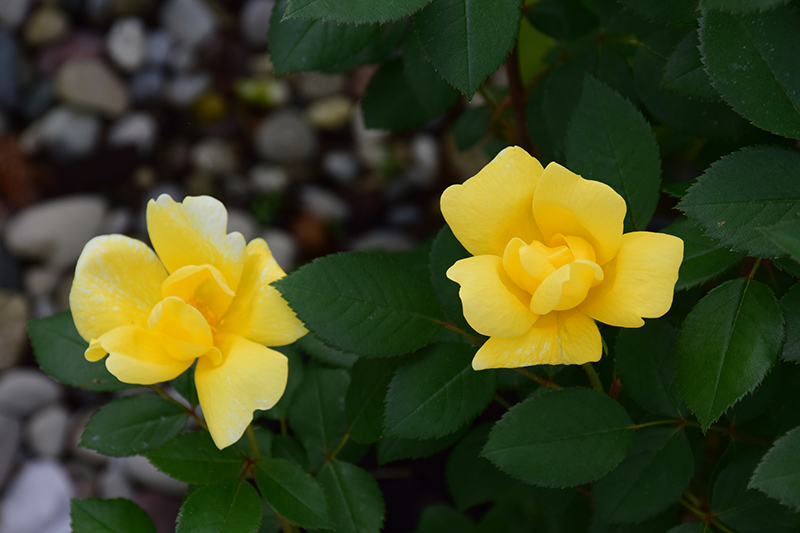Height: 5 feet
Spread: 4 feet
Sunlight:
![]()
Hardiness Zone: 4b
Other Names: Knockout Rose
Group/Class: Shrub Rose
Brand: Knock Out
Description:
One of the most popular roses in the world today, primarily due to its low maintenance, superior disease resistance and incredibly long period of bloom, with seemingly endless flowers in hues of yellow; all roses need full sun and well-drained soil
Ornamental Features
Sunny Knock Out® Rose is smothered in stunning lightly-scented semi-double yellow flowers with buttery yellow overtones at the ends of the branches from late spring to early fall. The flowers are excellent for cutting. It has attractive dark green deciduous foliage which emerges burgundy in spring. The glossy oval compound leaves are highly ornamental and turn an outstanding burgundy in the fall. The spiny brick red bark adds an interesting dimension to the landscape.
Landscape Attributes
Sunny Knock Out® Rose is a multi-stemmed deciduous shrub with a more or less rounded form. Its average texture blends into the landscape, but can be balanced by one or two finer or coarser trees or shrubs for an effective composition.
This shrub will require occasional maintenance and upkeep, and is best pruned in late winter once the threat of extreme cold has passed. Gardeners should be aware of the following characteristic(s) that may warrant special consideration;
- Spiny
Sunny Knock Out® Rose is recommended for the following landscape applications;
- Accent
- Mass Planting
- Hedges/Screening
- General Garden Use
Planting & Growing
Sunny Knock Out® Rose will grow to be about 5 feet tall at maturity, with a spread of 4 feet. It tends to fill out right to the ground and therefore doesn't necessarily require facer plants in front, and is suitable for planting under power lines. It grows at a medium rate, and under ideal conditions can be expected to live for approximately 20 years.
This shrub should only be grown in full sunlight. It does best in average to evenly moist conditions, but will not tolerate standing water. It may require supplemental watering during periods of drought or extended heat. It is not particular as to soil type or pH. It is somewhat tolerant of urban pollution. This particular variety is an interspecific hybrid.


